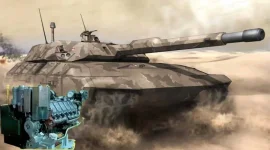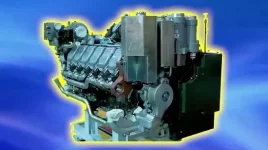- Views: 3K
- Replies: 9
In a significant move towards self-reliance in defence technology, the Defence Research and Development Organisation (DRDO) is preparing to commence extensive mobility trials for its new, domestically developed tank engine.
The Datran 1500, a 1500-horsepower engine with 90% indigenous content, has successfully completed most of its ground-based evaluations, paving the way for integration into an Arjun Main Battle Tank (MBT) for on-field testing.
This development represents a major milestone in India's decades-long effort to design and manufacture critical military hardware locally.
Developed by DRDO's Chennai-based Combat Vehicles Research and Development Establishment (CVRDE), the Datran 1500 is engineered to power the Indian Army's Arjun tanks.
The project, a collaboration with the public sector undertaking Bharat Earth Movers Limited (BEML), aims to end the army's reliance on foreign power plants.
The new engine is set to replace the German-made MTU MB 838 Ka-501 engine, which has been the primary powerplant for the Arjun Mk1 and Mk1A variants since their introduction.
The existing German engine is a 1400 HP, 10-cylinder unit. In contrast, the new Indian-developed Datran 1500 is a V12 engine that not only provides a 7% increase in power but is also optimised for high torque at lower RPMs, a feature expected to improve the tank's performance on difficult terrain.
With the successful conclusion of static ground runs, which tested the engine's power, cooling systems, and overall reliability, the programme is now advancing to dynamic trials.
BEML, which is responsible for manufacturing, has already produced an initial batch of 20 engines to facilitate this next phase. These units will be used for the forthcoming trials and allow engineers to make further design improvements based on performance data.
The integration process is scheduled to begin in mid-2025.
Due to the Datran engine's different physical design compared to the compact, U-shaped German MTU engine, modifications to the Arjun tank's engine housing and fuel systems are necessary. An older Arjun MBT will be retrofitted to serve as the initial testbed.
The first stage of mobility testing will be a 200-kilometre run conducted by the company in Chennai to evaluate the engine's fundamental performance.
Following this, the tank will be handed over to a specialised team from the DRDO and the Indian Army for a comprehensive two-year trial period, expected to run from late 2025 to late 2027.
These rigorous trials will subject the engine to the extreme environmental conditions where the Arjun MBT is expected to operate, including the intense heat of the Thar Desert and the high-altitude, sub-zero temperatures of the Himalayas in Ladakh.
Key performance indicators such as acceleration, durability, heat management, and torque delivery will be closely monitored to ensure the Datran engine meets or surpasses the capabilities of its foreign predecessor.
A successful outcome could lead to approval for full-scale production by late 2027, marking a new era for India's armoured forces.


